

by Douglas Tilbury
On May 14th. 1940 the then minister for war, Anthony Eden, broadcast his famous appeal for a quarter of a million men to come to the defence of their homeland in its hour of peril.
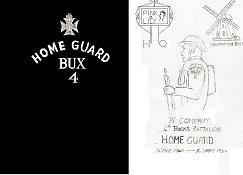
And so it was that fifty five men and three women were recruited from the villages of Lacey Green, Loosley Row, Great Hampden, Speen and Bryants Bottom to form "Bux 4". Other volunteers became Air Raid Wardens and Special Constables.
The C.O. of Bux4 was Captain Fairbrother, landlord of the Pink and Lily and a retired army officer. The pub itself was to become the Headquarters and Stores for Bux4. Second Lt. Carter came from Grimsdyke, Lt. Waite from Loosley House, and Lt. King from The Old House.

The orders given to this group was that their first duty was to "observe and report any enemies landing by plane or parachute". Their second duty was "to slay the enemy before he had a chance to do any harm".
To carry out these duties, each company was given twenty ancient and worn out 303 Lee Enfield rifles. A number of men, who already owned shotguns, were issued with 12 bore LG and SG cartridges, each consisting of half a dozen pellets. Later they were to receive their first issue of lethal ball cartridges, which consisted of one large round ball, capable of piercing a 2" board at 200 yards. By mid July of 1940, more Lee Enfields became available, and in late August a batch of new .303 rifles arrived from America.
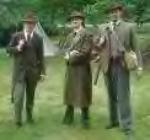

In September, "A" Company received a Browning automatic rifle, best known as a machine gun. This was joined in February 1941 by two Lewis machine guns. These were never satisfactory, as they were intended to be fixed to aircraft, and needed to be cooled by air. On the ground they overheated violently, and had to be fired in short bursts. In August 1941, seventeen American "Tommy guns" were issued. By July 1942 these had been exchanged for "Sten Guns"
The first "Sub-Artillery" weapons were issued in August 1941. They were designed to fire ginger beer bottles full of inflammable liquid at enemy tanks, and also phosphorus bombs which would burst into flame on impact. Grenades were also issued, the most famous being the "Molotov Cocktail", which was also in a bottle. The content of the bottle was a mixture of sump oil and petrol. They had the major problem of how to ignite them. One was supposed to hide behind a hedge and, at just the right moment, put a match to a petrol soaked rag, and throw the "cocktail" at en enemy tank.
Eventually a small number of grenades were issued and, on the last day of August 1941, the Home Guard members were allowed to practice "hand grenade throwing", which took place at a range in Walters Ash.
There was a long struggle for uniforms. The first suits of denim arrived on 21st. May 1940, but it was not until the middle of August that the men were fully fitted out. Forage caps, boots, tin hats, great coats and webbing belts made the unit a smart and efficient body of men
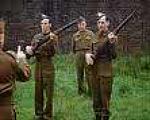
Amid the drill and training routine, mock battles were fought, the first being on 13th July 1940 against a neighbouring Home Guard Unit. The first planned battle against strangers was to have been against the Royal Fusiliers, who were stationed at Tythrop House, on the Thame road. It was obvious that Bux4 would be beaten, but luck was on their side. Before the "battle" could take place, there was a full scale alert. The Home Guard all over the country had to stand "at arms". This lasted for 24hrs before they were finally stood down. Sadly the planned battle with the Royal Fusiliers never took place!
Undeterred by their seven mile trek across difficult country and through woodlands, at the end of the day the men "fell in" like true soldiers, and marched up the hill like guardsmen. It was said that even Monty would have been proud to have been at their head.
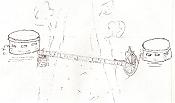 Sketch of the Pill Boxes located at either end of Lacey Green. There is still a Pill box to be seen at the end of Booker airfield.
Sketch of the Pill Boxes located at either end of Lacey Green. There is still a Pill box to be seen at the end of Booker airfield.
Three more night battles were fought against Reading University Senior Training Corps., who were encamped at Kimble Rifle Range. They attacked Princes Risborough twice, but Bux 4 captured their camp with a well planned pincer movement. The typical enthusiasm of the Reading University undergraduates put extra zest into these battles, and "casualties" inflicted by the older men were numerous.
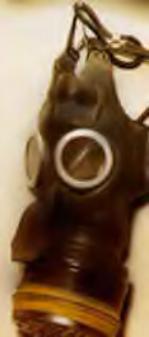
In another mock battle, one of the farmers brought what he believed to be a good alternative to grenades, in the form of addled goose eggs! Those at the receiving end were not at all amused.
On a number of occasions, Bux4 fought the Thame Home Guard, and were even able to "capture" Thame. This was fought in two feet of snow, making them realise what those fighting on the Russian front must be suffering.
Bux4 had a cunning plan. On a previous exercise at Thame, they had been surprised by a couple of men hidden under a load of hay. Bux4 decided to set up two diversions. One man was sent dressed as an officer, to march past the barricade with his "batman", who was carrying a bag full of bombs. No one thought to challenge him until it was too late. In the final stage of the battle, they captured a railway train heading for Thame. On arrival "A" platoon disembarked into the heart of the enemy defences.
When an RAF regiment arrived at Haddenham, they provided a much more sturdy opposition. They were not allowed to attack the Home Guard, but gained experience in street fighting while making their way through the old fashioned town. They won high praise from the regular officers who were acting as umpires. They were congratulated on a well planned attack vigorously pressed home.
Lacey Green platoon had one great advantage. Their commanding officer was Captain Fairbrother, a retired professional soldier. As "D. Day" approached they concentrated on exercises to test and defend the local railways. On one exercise, two men were dressed in German uniforms. When the driver of a passing train spotted them, he reported the sighting at Risborough Railway station. As a result, the local police spent a whole afternoon trying to find them before being informed that it was only an exercise. On another occasion, a dear old lady saw a man dressed as a German, crouched behind a hedge. Breathless with excitement, she hurried to report the sighting to the Home Guard, and was relieved to hear that they were already looking for him.
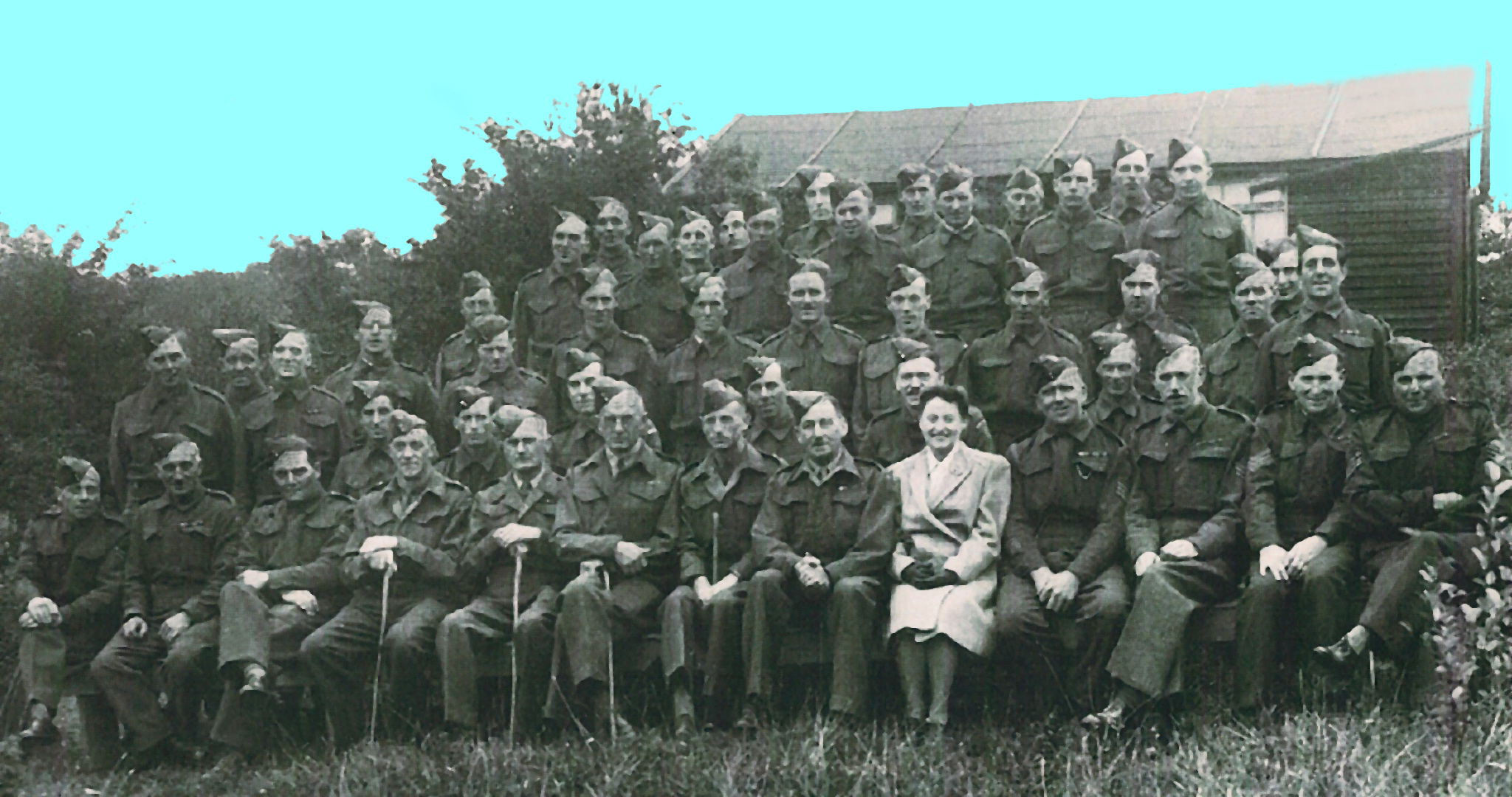
The "A" platoon Home Guard hut was situated between the holly hedges which are now on the site of the property "Chipko" at Parslow's Hillocks. Whilst they both won and lost their mock battles, the men had the advantage of all being village born and bred. With a war on, food was in short supply. A man with a gun could supplement his meat ration with a rabbit or two, or maybe a pigeon. At the end of the war, when it came to handing in their surplus 12 bore cartridges, there was an unaccountable discrepancy. Many a rabbit must have fallen during exercises! The men were good shots. In the Bucks County Show, they scored 109 out of a possible 120 points.
Thousands of the 1917 pattern Lee Enfield n.3 rifles were issued to the Home Guard during World War II. On 6th September 1944, orders were given by the War Secretary for the Home Guard to "stand down". Morale was high at the time, as the men had given their time and leisure hours for four years in training to oppose the enemy in the event of a possible invasion. Many men appeared bitterly disappointed that all this was to come to an end.

A farewell celebration was arranged. The Ministry of Food issued permits for extra food rations (but not meat). Local brewers gave Bux4 extra rations of beer, and the publicans also contributed. The celebration meal took place in the Carlton Cinema in Princes Risborough (opposite the GPO Sorting Office in Bell Street, where a block of apartments now stand). Almost 400 men from Bux4 took part in the meal, and community singing, ending with Auld Lang Syne.